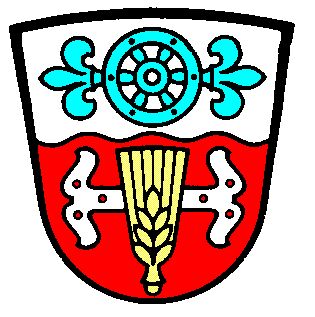Saaldorf-Surheim: Difference between revisions
Knorrepoes (talk | contribs) m (Text replacement - "/Arms of " to "/Arms (crest) of ") |
Knorrepoes (talk | contribs) m (Text replacement - "{{media}}" to " {{de1}} {{media1}}") |
||
| Line 27: | Line 27: | ||
The lower half is derived from the arms of the Counts of Kuenburg, who had several possession in the Northern part of the municipality. The wheat ear was added as a symbol of agriculture. | The lower half is derived from the arms of the Counts of Kuenburg, who had several possession in the Northern part of the municipality. The wheat ear was added as a symbol of agriculture. | ||
{{ | |||
{{de1}} | |||
{{media1}} | |||
[[Civic Heraldry Literature - Germany|'''Literature''']]: Information provided by the Saaldorf-Surheim council | [[Civic Heraldry Literature - Germany|'''Literature''']]: Information provided by the Saaldorf-Surheim council | ||
Revision as of 11:21, 26 December 2022
This page is part of the German heraldry portal |
Heraldry of the World |
|
German heraldry:
|
Selected collector's items from Germany:
|
SAALDORF-SURHEIM
State : Bayern
District (Kreis) : Berchtesgadener Land (until 1974 Laufen)
Additions : 1978 Saaldorf, Surheim
| German | Im Wellenschnitt geteilt von Silber und Rot, oben ein blaues Rad, das rechts und links mit einer wachsenden blauen heraldischen Lilie besteckt ist, unten ein waagrechtes silbernes Türband, überdeckt von einer goldenen Ähre. |
| English | No blazon/translation known. Please click here to send your (heraldic !) blazon or translation |
Origin/meaning
The arms were granted on October 13, 1981
The wavy division line symbolises the Sur, the river that runs through the municipality. The wheel in the upper half symbolises the importance of the roads through the municipality. The fleur-de-lis connected to the wheel are the symbol of St. Rupert, patron saint of the village. The silver and red colours are taken from the arms of the diocese and State of Salzburg, to which the area historically belonged.
The lower half is derived from the arms of the Counts of Kuenburg, who had several possession in the Northern part of the municipality. The wheat ear was added as a symbol of agriculture.
Literature: Information provided by the Saaldorf-Surheim council


